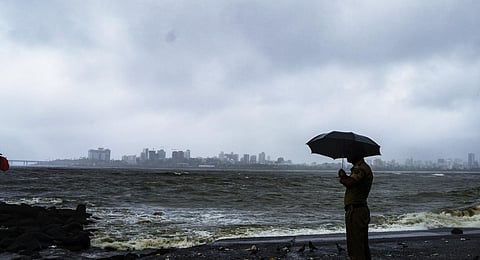

With the Southwest monsoon season coming to a close, the fears of below-normal rainfall during April-September 2023 have materialized.
The cumulative monsoon rainfall stood at 94% of the long period average (LPA), below the India Meteorological Department’s (IMD) second stage Long Range Forecast (LRF) of 96% for the full season. This is the first instance of a sub-normal monsoon since 2019.
In addition to the shortfall in the quantity, the temporal and the spatial distribution of the rainfall were quite uneven during the season.
The onset was unfavorable, with rainfall below the LPA by 10% in June 2023, followed by excess rainfall at 14% above the LPA in July 2023. Thereafter, following the onset of El Nino conditions, the country witnessed a prolonged dry spell in August 2023, with a large shortfall in rainfall of 36% below LPA. This was the driest August since 1901. Similar to July, rainfall at the all-India level was 13% above the LPA in September 2023, which aided in narrowing the gap by the end of the season. However, this may be too little and too late, as far as the outlook for the kharif yields and rabi sowing is concerned. But more on that later.
Coming to the spatial distribution, the shortfall is quite large in some parts of the country. East and North-east India have witnessed deficient rainfall, at 81% of LPA, well below the IMD’s forecast of 94-106% of LPA for this region, with states such as Jharkhand (73% of LPA), Bihar (76% of LPA) and Assam (80% of LPA) witnessing a particularly large deficit. Additionally, the South Peninsula witnessed below-normal rainfall, at 92% of LPA, with Kerala (64% of LPA) and Karnataka (82% of LPA) witnessing a considerable deficit. Moreover, parts of the other regions, such as eastern U.P., Marathwada, and Madhya Maharashtra also witnessed a large deficit in rainfall during the monsoon season.
These vagaries have manifested into an unevenness in kharif sowing. The aggregate area sown for such crops was up by 0.3% year-on-year (YoY) as of September 22, 2023, as compared to the corresponding year-ago level. This benefitted from higher sowing of sugarcane, coarse cereals, and rice, marginally outweighing the YoY decline in other major crops including pulses, jute, mesta, cotton, and oilseeds.
In particular, the lag in the sowing of pulses, oilseeds, and cotton is likely to have inflationary implications, with the prices of the former steadily rising across the last few months. Additionally, there are fears that the unusual dry spell in August 2023 is likely to have impacted yields across several crops, implying that a rise in the area sown may not necessarily translate into a higher output.
Poor monsoon rains also have a bearing on rabi sowing and output. Rainfall during the Southwest monsoon plays an important role in replenishing the groundwater as well as reservoir levels, which typically peak in Sep-Oct 2023, ahead of the rabi season. These, in turn, play an important role in terms of water availability for facilitating rabi sowing, thereby influencing the prospects of rabi output. Large lags in reservoir levels vis-à-vis their historical averages are typically associated with poor rabi sowing outcomes.
Discouragingly, the all-India reservoir storage stood at 71% of FRL as of Sep 21, 2023, ~6 percentage points below the historical levels. While rains in October would replenish reservoirs and support rabi sowing activity, a late withdrawal of the monsoon may delay the kharif harvest and/or douse yields of such crops that were sown early in the season.
Owing to the impact of the sub-par and uneven monsoons on kharif output and rabi sowing, ICRA projects the GVA growth of agriculture, forestry, and fishing to dip to ~2.0% in H2 FY2024 from the ~3.0% expected in H1 FY2024. We expect rural sentiment and demand to turn cautious in H2 FY2024. Additionally, elevated inflation in food items such as cereals, pulses, spices, and vegetables may impact consumption demand.
Amid concerns stemming from uneven and sub-par monsoons, we have lowered our two-wheeler volume growth projections for FY2024 to 4-7% from 6-9% earlier. Moreover, we see downside risks to our tractor volume growth forecast of 0-2% for FY2024, on an elevated basis.
The early signs of stress in rural areas are visible in the surge in employment demanded and provided under the Mahatma Gandhi National Rural Employment Guarantee Scheme (MGNREGS) in recent months. The average work demanded under MGNREGS has risen by 14.3% YoY to 24.6 million people in Q2 FY2024. Moreover, the person days generated under this scheme stood at 1.8 billion in FY2024 so far (till Sep 29, 2023), 62% of the amount seen in full-year FY2023.
Consequently, the outgo under this scheme in H1 FY2024 has surpassed the entire budgeted amount for FY2024, indicating that additional allocations may be made through the supplementary demand for grants. ICRA estimates the outgo under MGNREGS in FY2024 to exceed the budget estimate by at least Rs. 250-300 billion. Although this amount is not alarming, it will compress the fiscal space available for other priorities.
Overall, the impact of the uneven and sub-par monsoon rainfall would linger on beyond the end of the monsoon season, with the potential to affect growth and inflation outcomes in H2 FY2024.
The author is chief economist and head of Research & Outreach at ICRA